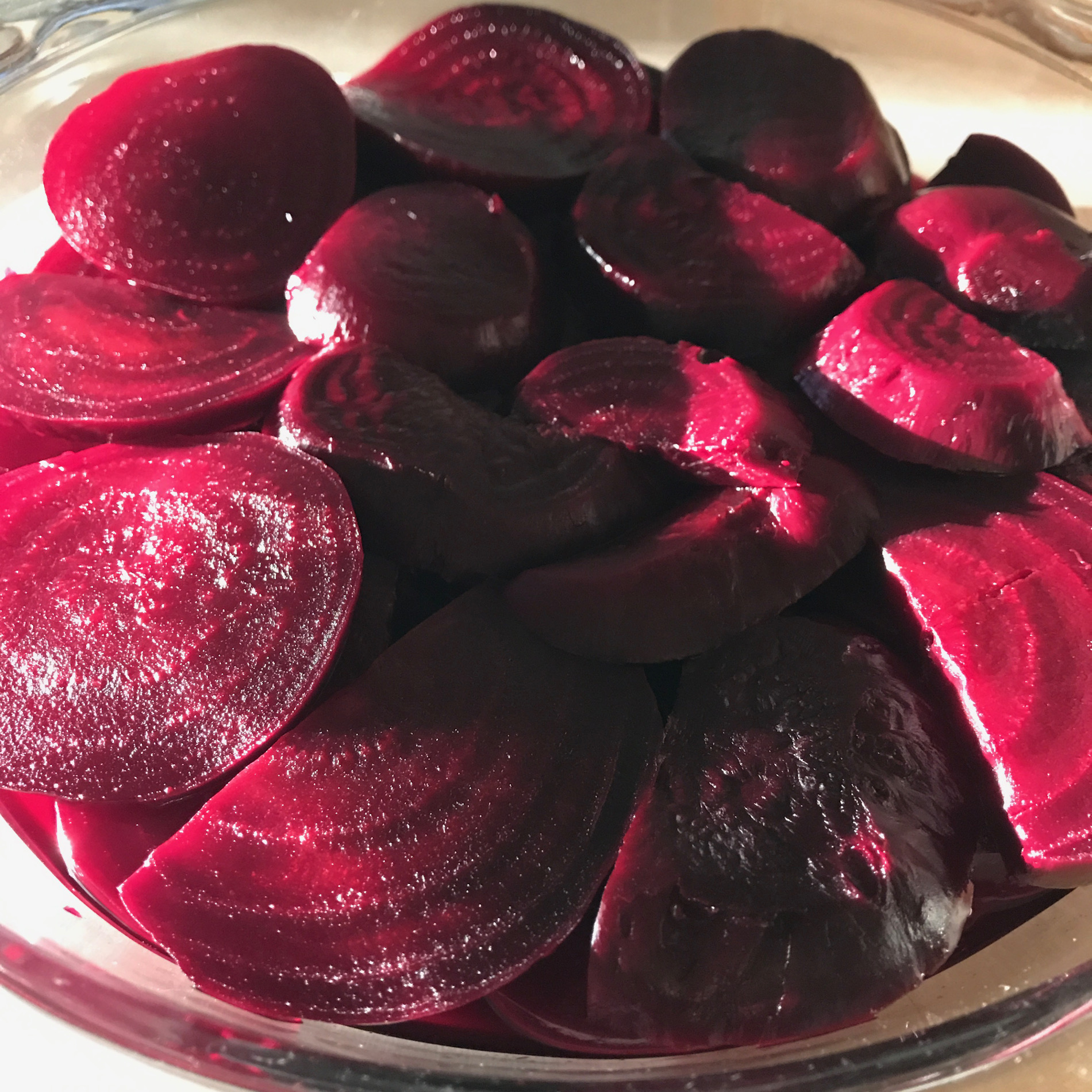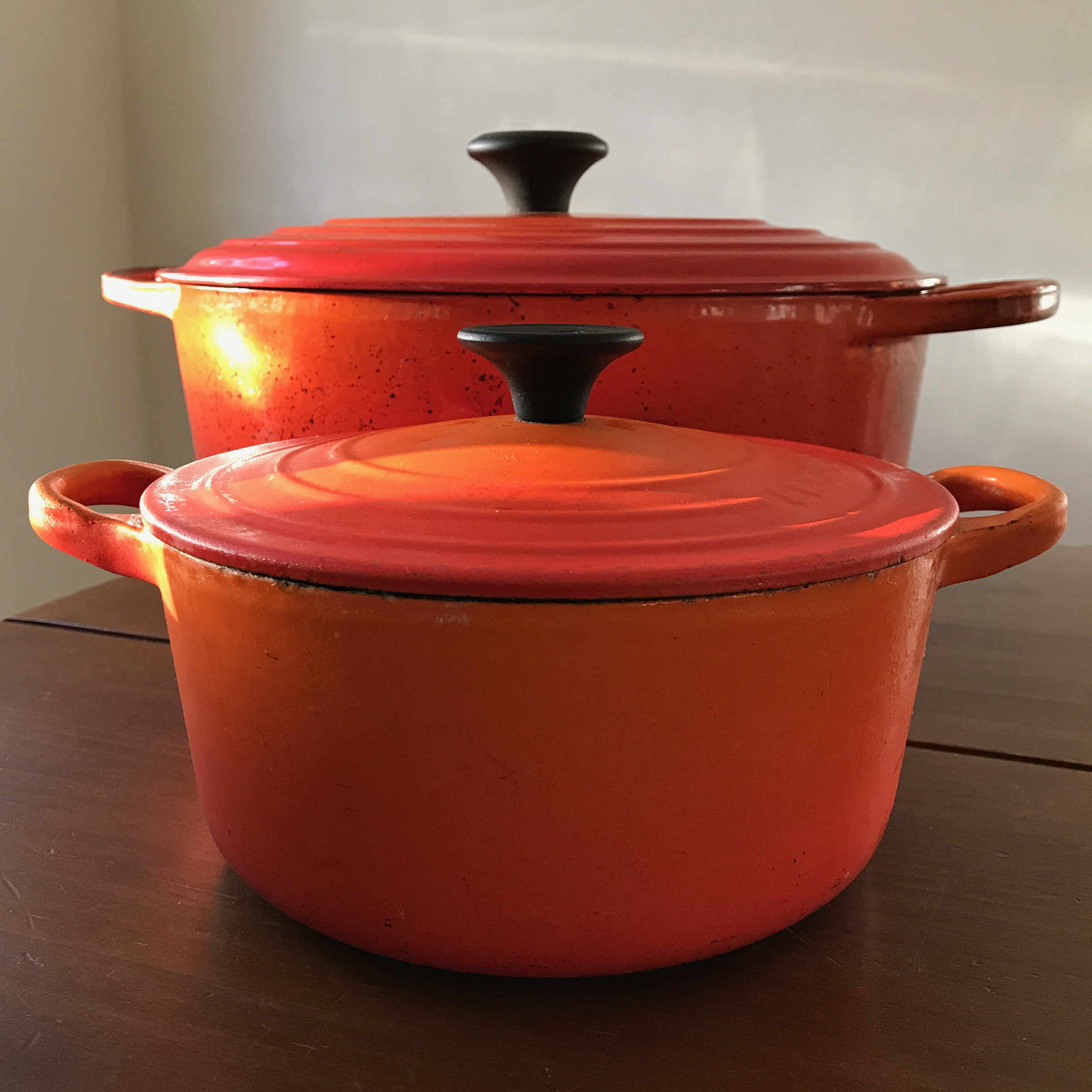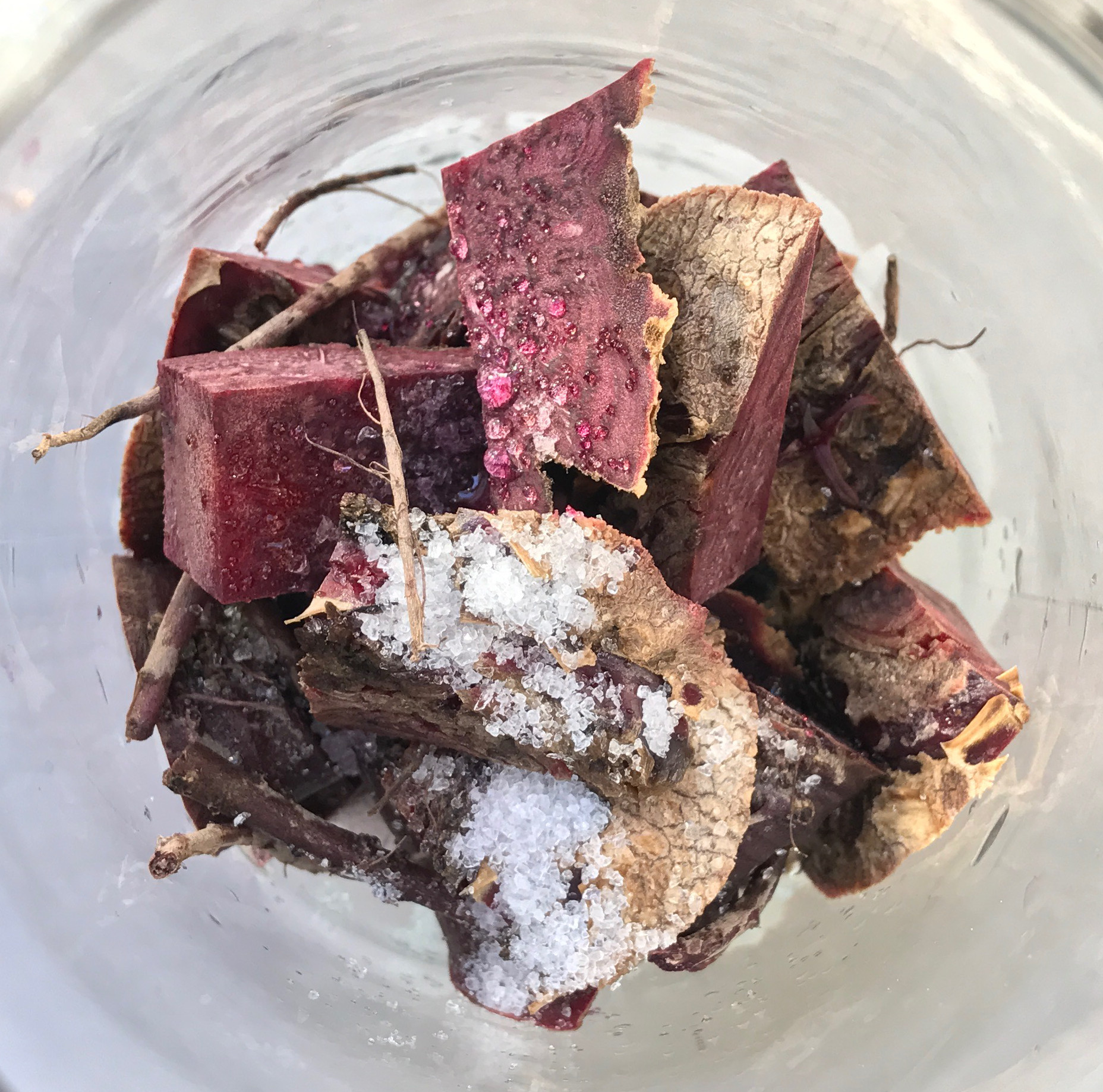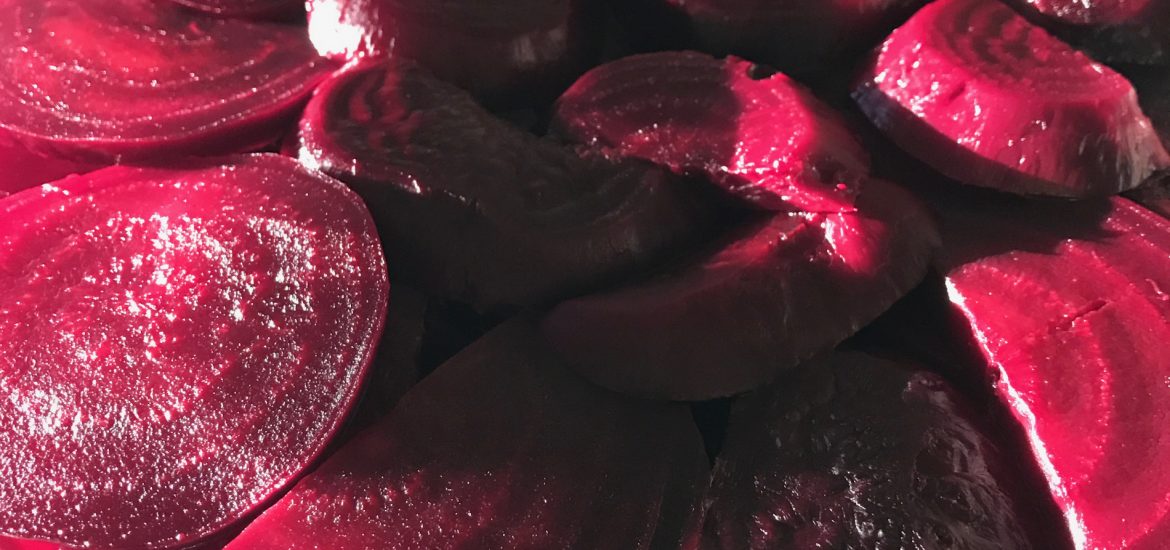


How can I possibly be so excited about something as lowly as beet pickles, besides the fact that they taste delicious?
My daughter MK has loved these since she was little. I ate most of the pickles I made for this post though…I had to do quality control…sorry MK…
Nothing goes to waste
To make these, you roast beets, peel them, allow them to cool, slice them, then pour on a mixture of hot vinegar in which you’ve dissolved sugar.
Before I ventured onto the zero-waste path, when I made beet pickles, I:
1. Wrapped the beets in tinfoil to roast, after which I tossed the messy foil.
2. Recycled the store-bought vinegar bottle and tossed its plastic cap after had I used up all the vinegar.
3. Composted the little bits of beet trimmings.
That’s not a huge pile of waste. But if you’re like me, once you’ve started to reduce your waste, you can’t stop. You want to solve all of these little dilemmas. And you often come up with creative solutions that render improved results—and save money.
Today I make beet pickles by:
1. Roasting the beets in a Dutch oven. No more tinfoil to buy and throw away! The tight seal of a Dutch oven creates an environment similar to the tinfoil. To save energy, roast these while you cook other food in the oven and finish making the pickles later if you want a little break. I often cook food in stages like this to save both energy and time.

2. Using kombucha vinegar instead of store-bought vinegar. I love not having to buy another item at the store. I make vats of kombucha and always let some sit for several weeks so I’ll have a steady supply of very strong vinegar.

3. Making beet kvass with the little scraps of beets. You can render at least 8 ounces of beet kvass—a savory, salty, fermented and probiotic drink—from a handful of beet scraps alone. A bottle this size will cost about $7 in the store if you can find it. (Click here for the beet kvass recipe.)


Ingredients
- 3 to 4 large unpeeled beets, scrubbed and trimmed
- 2/3 cup kombucha that has turned into very strong vinegar (or white vinegar)
- 3 tablespoons granulated sugar
Instructions
- Place beets in a Dutch oven or a glass Pyrex dish with a lid.
- Roast in a 325°F oven for an hour or until the beets are tender when pricked with a fork.
- When the beets are cool enough to handle, you should be able to easily slip off the peels with your thumbs. Slice into 1/4-inch thick rounds. Arrange in a layer or two in a shallow dish.
- Combine vinegar and sugar in a small sauce pan. Heat and stir to dissolve sugar and pour over beets.
Notes
If desired, use the beet scraps to make a small amount of beet kvass. Place the scraps in a 16-ounce jar, sprinkle with 1/2 teaspoon of salt and pour in water until the jar is nearly full. Close the jar and place on a plate to catch any gurgles during fermentation. Allow to sit at room temperature to ferment for a few days. Burp the jar (i.e., open it) daily to release carbon dioxide. Taste the beet kvass on day three or so. It should be tangy and slightly effervescent. If not, let it sit until it has achieved the flavor you like. Strain out the beets and bottle the drink if desired. Go here for more instructions on making beet kvass.


Love this. I remember when I first found out that beet leaves were edible – such a revelation. I’ve not tried the kvass with the scraps though – good idea. Quick question on the vinegar: do you test the ph? I’ve always read that homemade vinegar is often not strong enough. Do you test to make sure or just give it that extra long ferment and ‘hope for the best’?
We get so many beets in the winter, and I love them. I will have to try this. I have a question about the beet kvass. In the original post it looks like you used only peeled beets. In this post there is a picture that looks like you included the peels from the roasted beets. Is that right?
Hi Joana,
Lucky you! Thank you for asking about this. You don’t need to peel the beets but if you do, use the peels and any other scraps before you roast the beets. You need all the good bacteria and yeast on the beets for the fermentation. Heating will kill them.
~ Anne-Marie